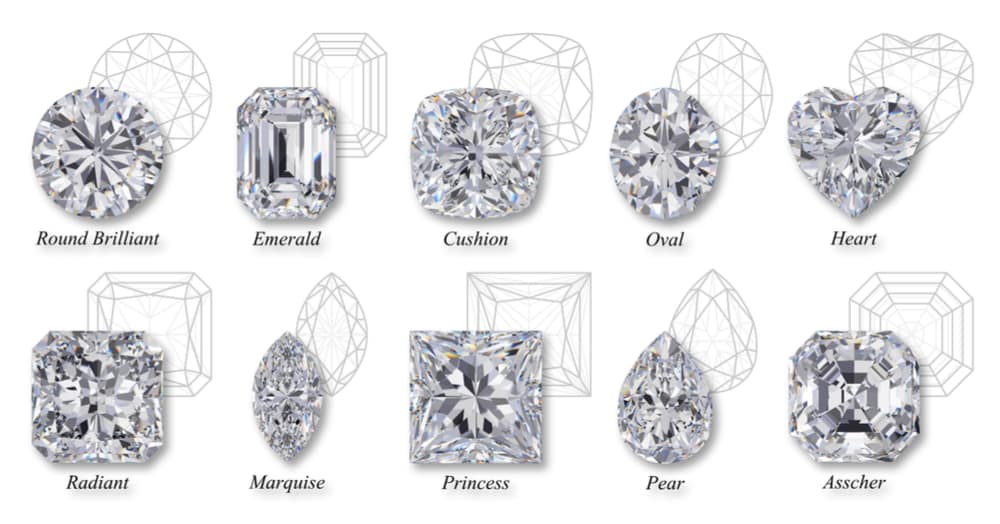Learn
The 4 C’s to choose a diamond
Cut
The cut is used to determine the shape of the diamond and how well it was cut
Color
Diamonds can have different shades of colors which affect the refraction of light and causes that sparkle we know
Clarity
Most diamonds have inner flaws. The clarity refers to the visibility, number and size of inclusions
Carat
The carat is the unit of weight by which the diamond is measured
The basics of buying a diamond starts with determining each one of the 4 C's you are looking for. The four of them affect the price in a different way so it's essentiel to either do a lot of research, or have a specialist consult you on the best combination depending on your choice of diamond and price range.
CUT
The shape refers to the appearance of the stone, and the cut to the diamond's ability to reflect light.
- Round are by far the most popular diamond shape, representing approximately 70% of all diamonds sold
- Emerald have a unique shape due to the step cuts of its pavilion and its large, open table
- Cushion combine a square cut with rounded corners, which looks much like a pillow
- Oval are modified brilliant cuts with the advantage of an elongated shape, which creates the illusion of a greater size
- Heart are a unique and unmistakable symbol of love, popular in solitaire pendants as well as rings
- Radiant are the first rectangular cuts to have a complete brilliant-cut facet pattern creating a vibrant and lively diamond
- Marquise are like a football-shaped, brilliant cut. Because it is narrow and long, it will also create the illusion of greater size
- Princess are one of the most popular fancy diamond shapes and a good choice for its ability in working in almost all styles of rings
- Pear are a combination of a round and a marquise shape, with a tapered point on one end
- Asscher are similar to the emerald cut, but in a square shape with larger step facets and a higher crown

COLOR
A diamond comes in a variety of colors, some of them at a very high price (pinks, blues, even dark yellow). However, in a white diamond, the presence of a yellow tint will lower the price of the diamond.
Diamond color is the second most important thing to consider when purchasing a diamond, right after a diamond's cut. Color is the first thing the eye notices after sparkle.

CLARITY
The clarity of diamonds refers to small surface characteristics called blemishes or internal characteristics called inclusions.
Clarity is often one of the least important consideration when buying a diamond because most inclusions are microscopic and cannot be seen to the untrained and unaided eye.
If you want to ensure that your diamond is eye-clean, select SI1 or better.

CARAT WEIGHT

Diamonds are sold by the carat. Today, a carat is equal to exactly 0.2 grams.
Two diamonds of equal carat weight can have very different costs based on the 3 other factors (Cut, Color, Clarity).
As the carat size of a diamond increases, the diamond's price per carat increases. Why? Because the larger the diamond, the rarer it is.
Fewer than one in one million mined rough stones are large enough to produce a finished 1-carat diamond.
So, as carat weight increases, you will typically pay more not only in total but on a price per carat basis as well.




